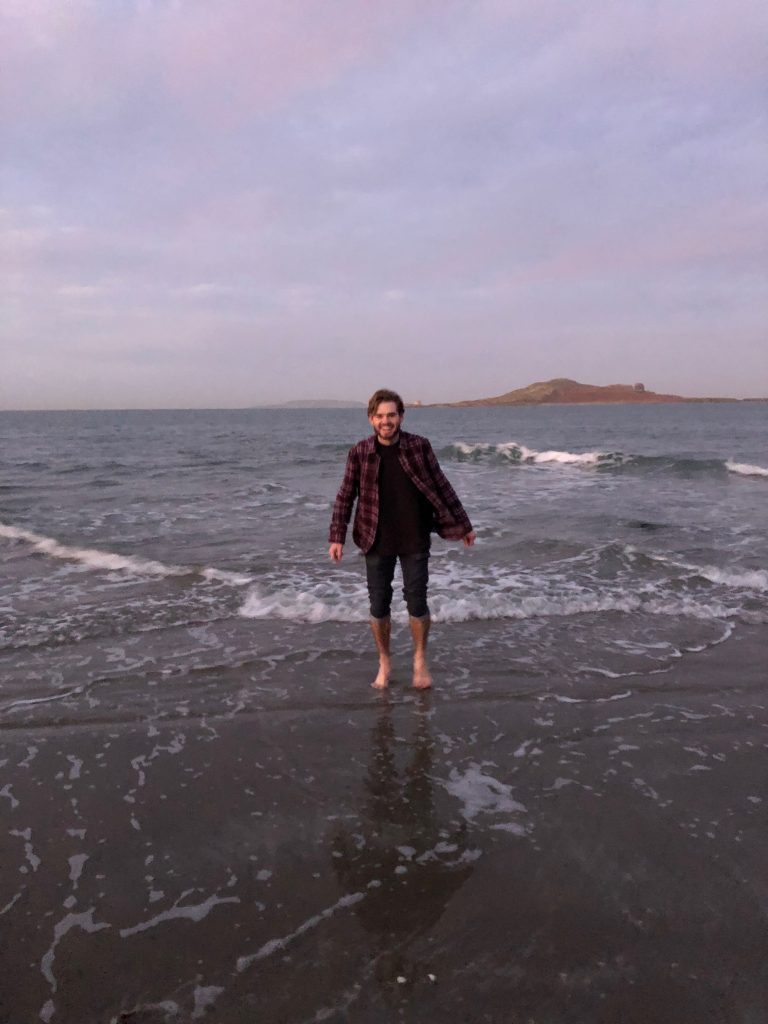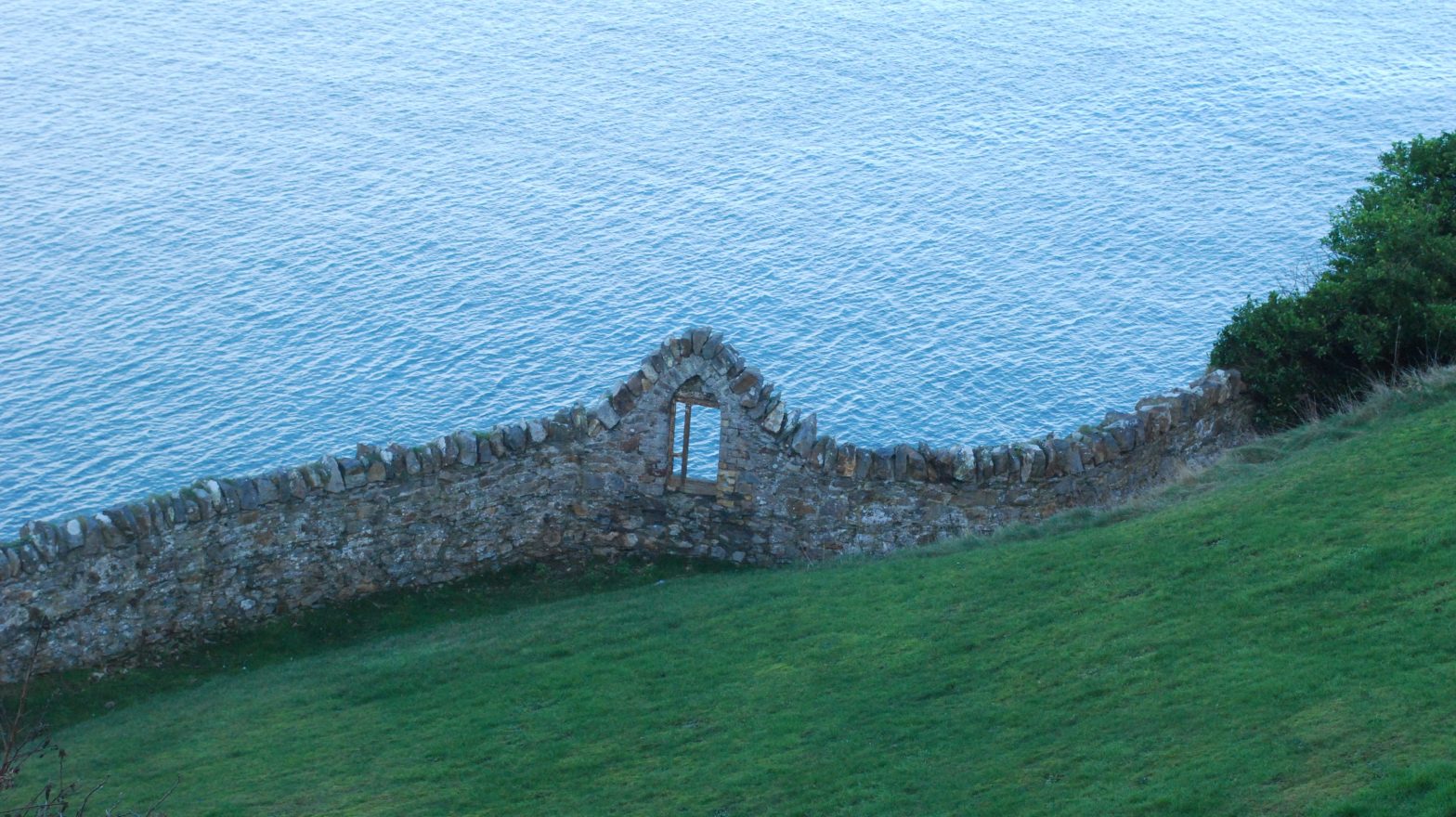During their taxi rides in, several members of our writers group had been told of a quaint fishing village nearby, that had the best cliffside views one could hope for. After a bit of research, we discovered that this village was called Howth- from Old Norse Hofuth, meaning a promontory- and was only a half hour’s train ride north. Last weekend, my friends and I decided to check this fishing village out for ourselves.

After a forty-five minute walk (after which we all decided never to do again) through Dublin’s shopping district, we reached Connolly Station. From there we took the DART (Dublin Area Rapid Transit) to Howth, which rested on a small peninsula just north of Dublin city. This had been my first time using the rail system here in Ireland. And, overall, one of the only handful of times I’d used one in my life. I’m glad to report the experience wasn’t half as stressful and complicated as I’d worried it’d be (this has been how most study abroad experiences have turned out, thankfully). We passed by views of idyllic neighborhoods reminiscent of Privet Drive in Harry Potter, green parkland, and dense vegetation. Then the landscape flattened to marshes, and suddenly there was the Irish Sea, sparkling blue and extending forever into the horizon. The horde of chattering schoolchildren could tell we were tourists the moment we all collectively gasped and stared out the window as we crossed to the neck of the Howth peninsula.
After we unloaded from the DART, our group hurried to the water’s edge. Sitting on the stone wall barricading the water from the land, I could almost lose myself in the numbing wind blowing in from the Irish Sea. To one side was the coast of Ireland, reaching up into counties Fingal, Louth, and Down. To the other side was open ocean, England somewhere innumerable miles in the distance.
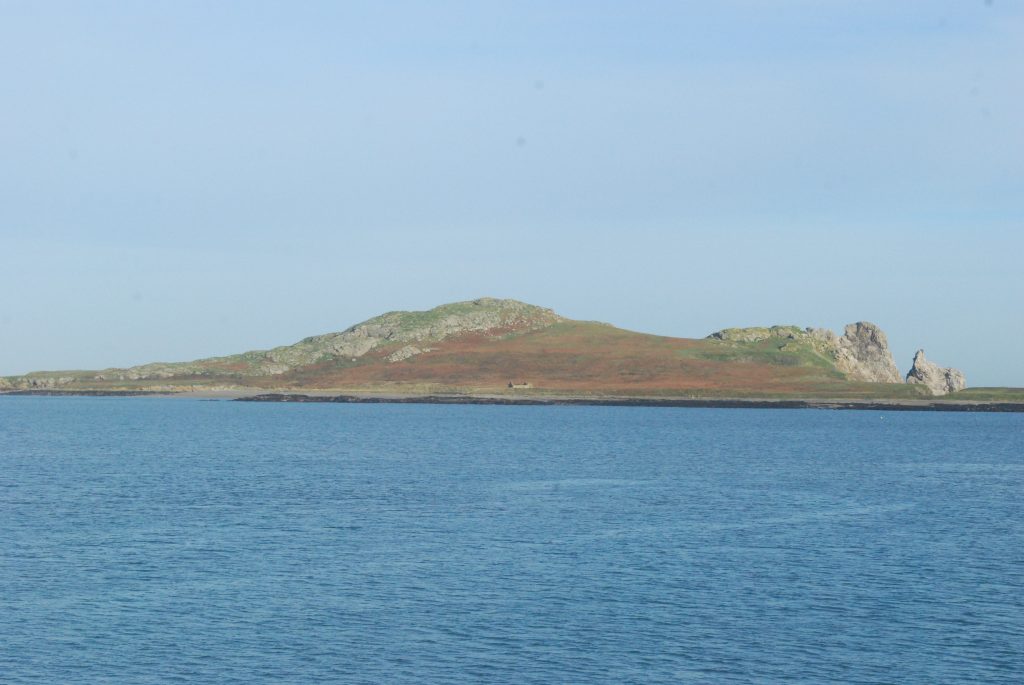
Our group shortly set out on a hike around the peninsula, leaving the quaint Howth village behind us. We slowly progressed past the last few remnants of the town, bypassing houses and neighborhoods and walking until the road disintegrated into a stony path. Finally, when to our right were open green fields and to our left was the endless ocean (and a steep drop down to lethal boulders), we reached our destination; Natural Ireland.
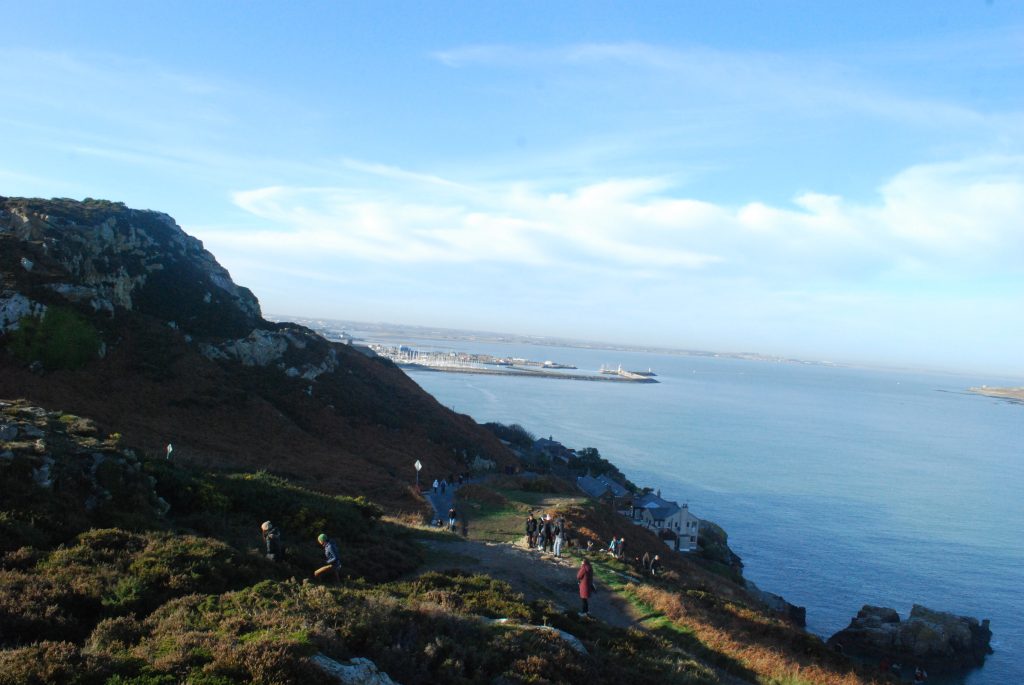
I’ve loved my first weeks of living in Dublin, don’t get me wrong. At this point, I feel fairly confident saying that Dublin, while being the first city I’ve lived in, is also the best city I’ve experienced. Dublin is worth the obstacles and hassles that come with city-living. But one of those hassles is the utter inaccessibility of natural land. I’m used to my hometown, where I’ve never had a shortage of trees and forests, and Hope College, where the seashore is only a short drive away. But Dublin has spread far and wide, and at times I wonder if the roadways and residential neighborhoods will never end. Here, I found out (with great relief) that they do, and beyond them are the picturesque Irish landscapes I’ve only ever dreamed of. Here were roiling coastlines singing alongside the gulls, crashing into dark stone transitioning to verdant hills with grasses flattened by the wind’s sheer force. Here was a wild, untamed force of nature that inspired storytellers to craft their epics of fairies and mythological gods. Here, was Ireland, as I’d known her in childhood.
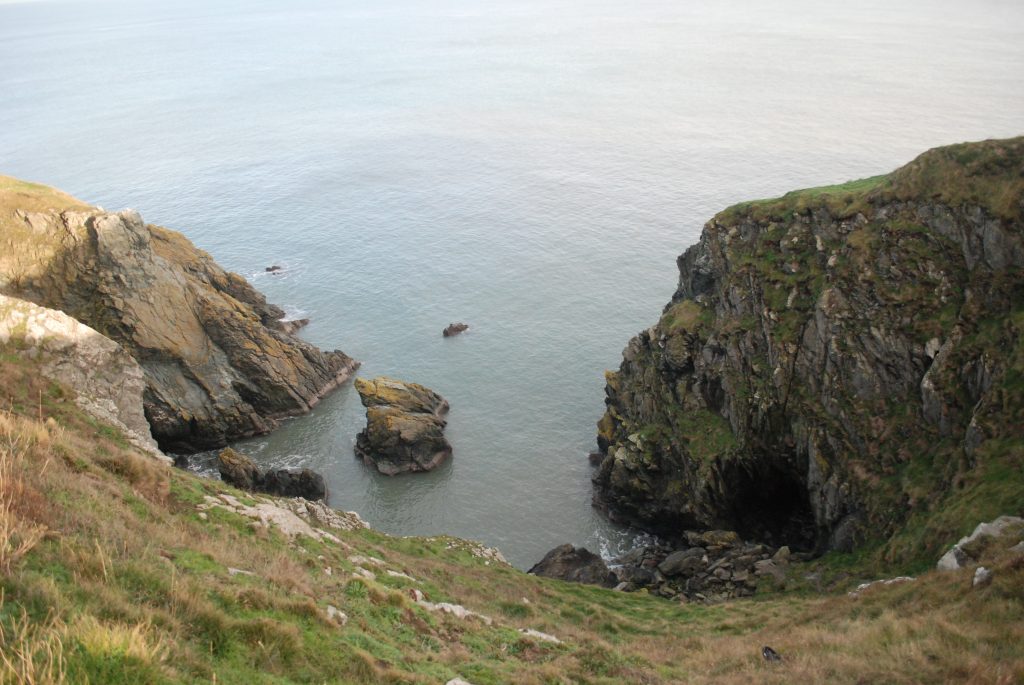
We made our way along the peninsula, reaching the very tip which afforded us a beautiful view of Southern Ireland and the curves of the Wicklow Mountains. Here the wind was at its most powerful. We sat there for a period of time, no one cared to measure. Ireland’s beauty had put us all in a mood of contemplative silence. Or it might have been that we were so exhausted from the hike that we wanted nothing more than to sit and rest. It was difficult to believe that I was there, sitting by the coast of Ireland, far from the city and its accompanying noises. The only sound to hear was the unsullied drone of wind coming in over the waves. But, on the other hand, I felt so fundamentally grounded in the physicality of that moment, the thick, rough grass beneath me, the lifeless cold gripping my hands. If you will forgive the cliche (and I regret to say it probably won’t be the last one), there was an undeniable magic on the Howth cliffs, sweetened of course with reflection.
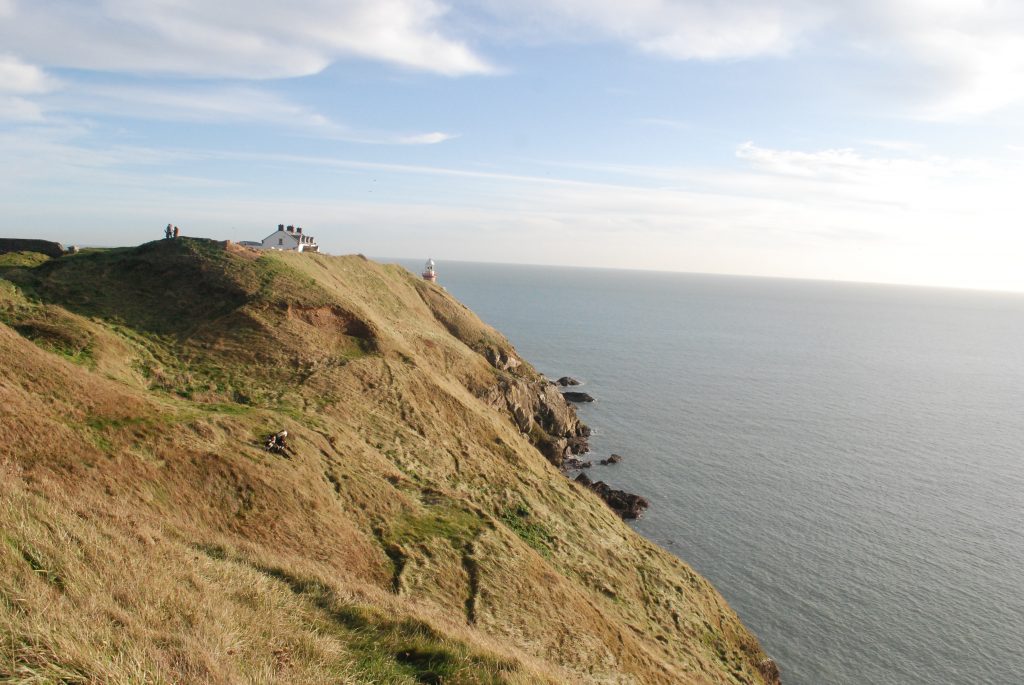
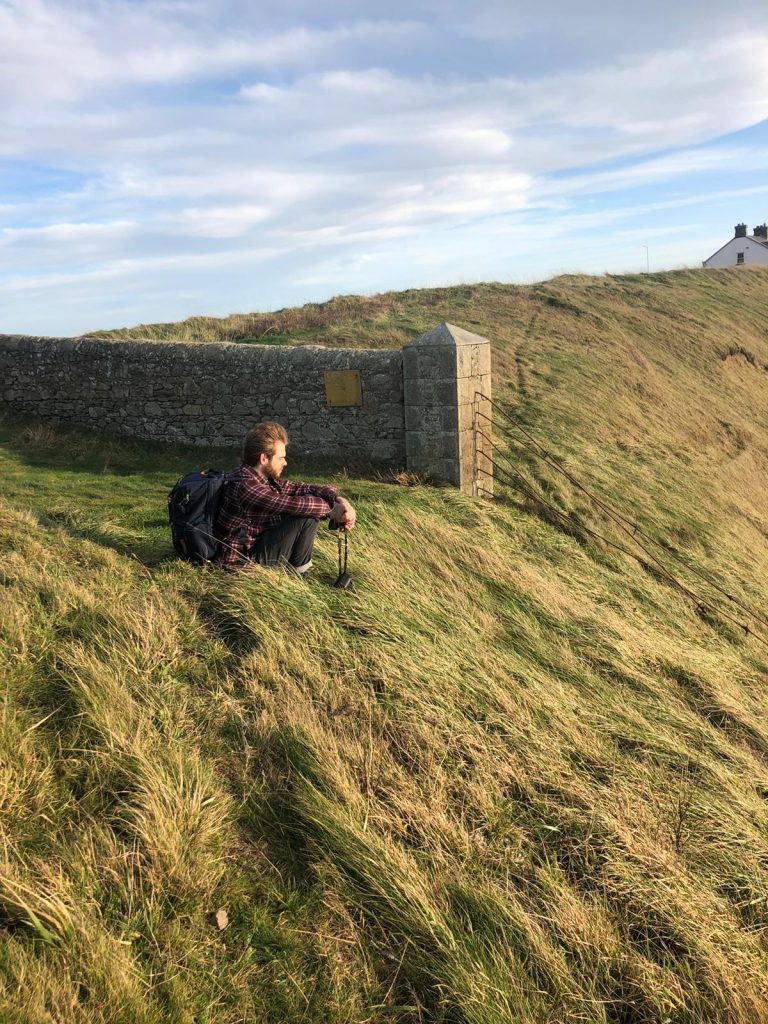
Ireland is a land of myth; it stands to reason that both land and myth interweave and coalesce with each other, just as the conscious and unconscious come together to form a functioning mind. One can’t enjoy the land without the myth, and the allure of the myth is only as prominent as the sheer artistry of the land. I imagine the space where the land becomes the myth or vice versa, looks a lot like this area we were at. In my class on the Irish Short Story, our professor has mentioned many times the importance of transitions in Irish art. They are always moving from one designated space to another, and it is in that transitional space that genius (or magic) is present. Life to death, day to night, real to fiction, it’s all the same. Passageways between hold the origins of Irish legends, novels, and ballads. On Howth’s cliffs, where land met the sea and water melded to stone, I felt one of those passageways between.
We eventually made our way back to town, my feet thoroughly hating me by the end of it. The majority of our group headed back on the DART, while a friend and I stayed back to explore a little bit more. We wandered the streets of Howth, entering churches and old ruins, watching the sun color the sky as it fell. Finding our way to an empty beach, we took our shoes off and walked into the strikingly cold Irish Sea for the first time.
